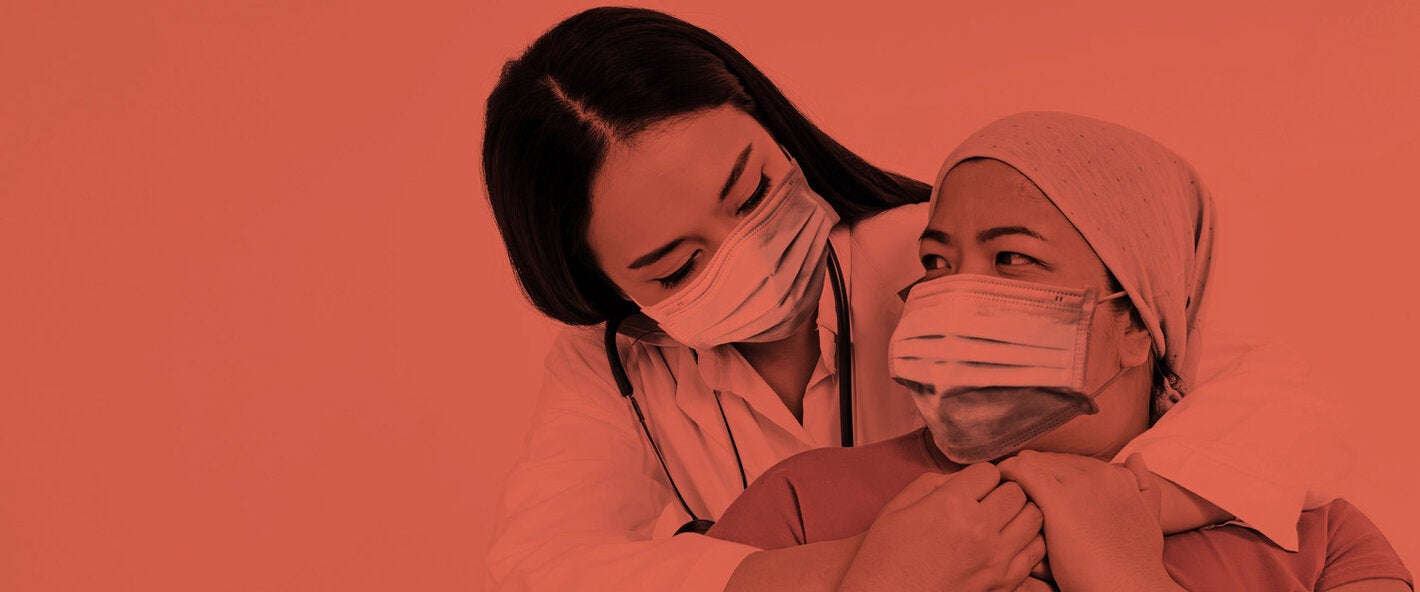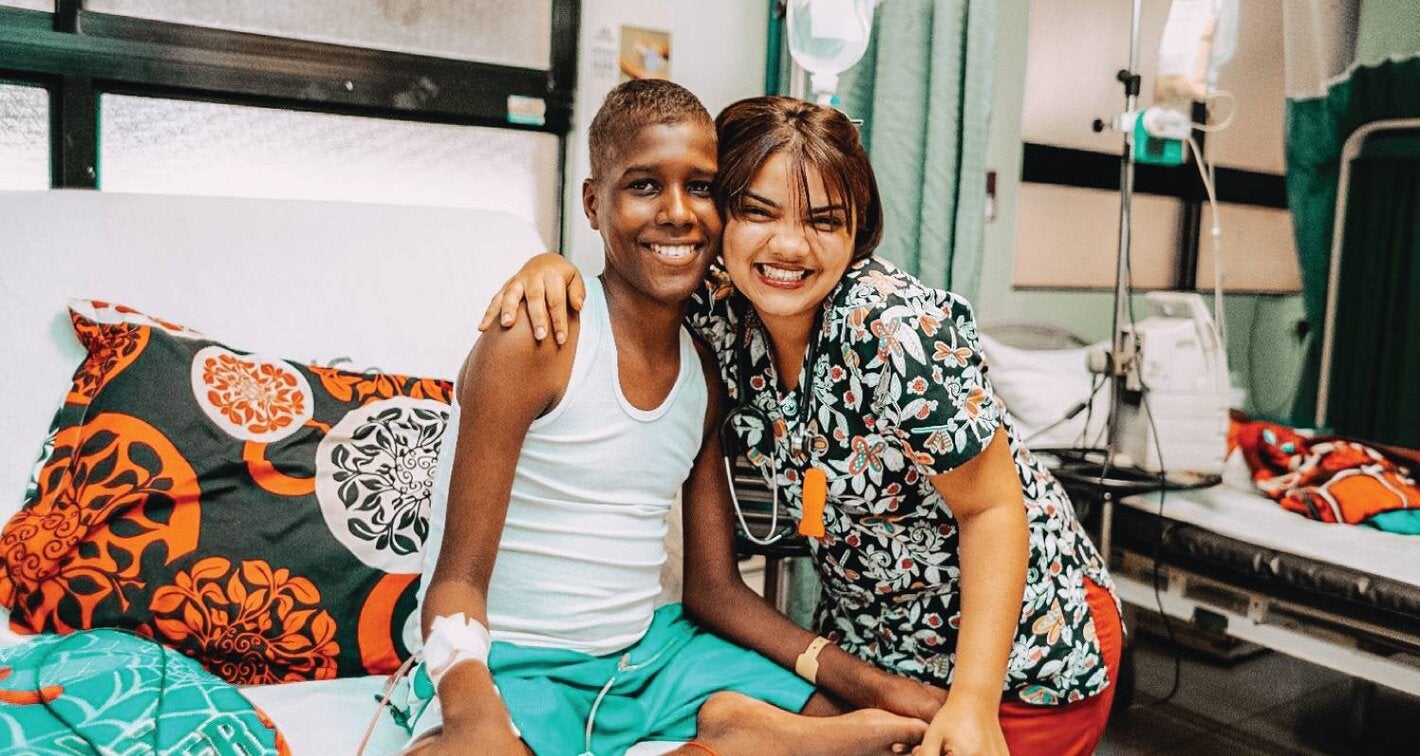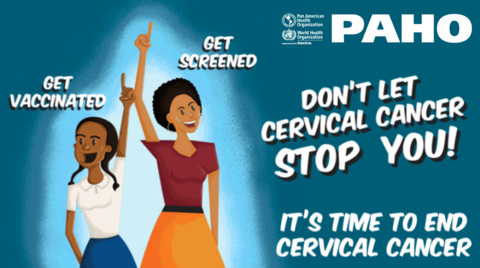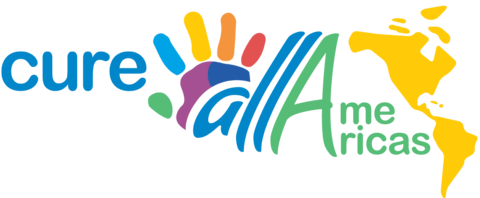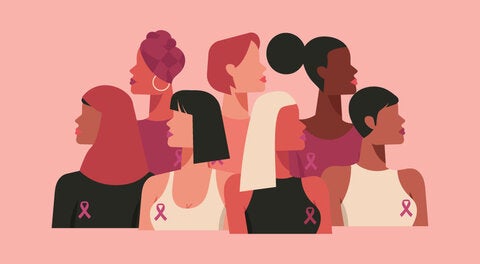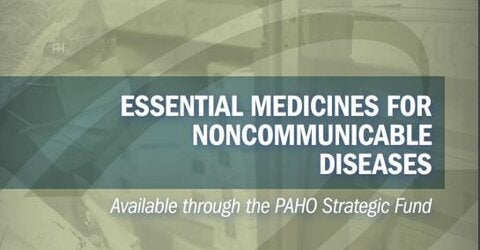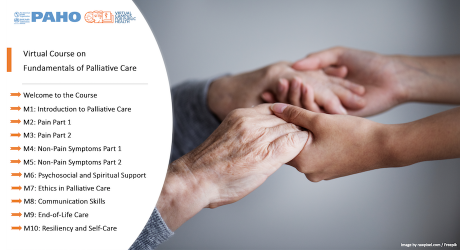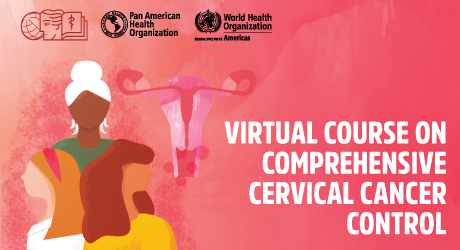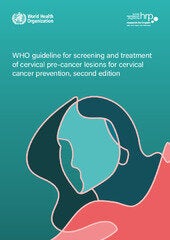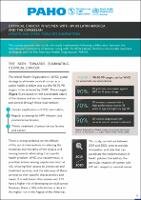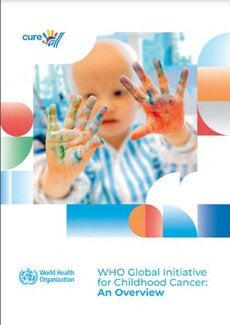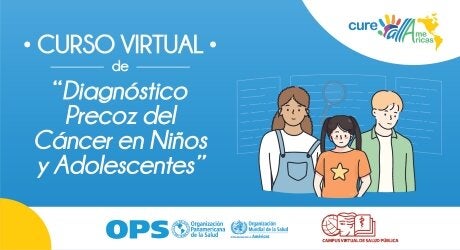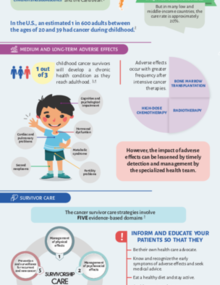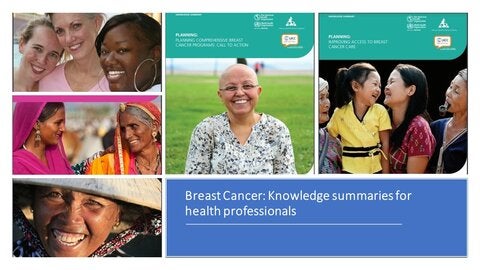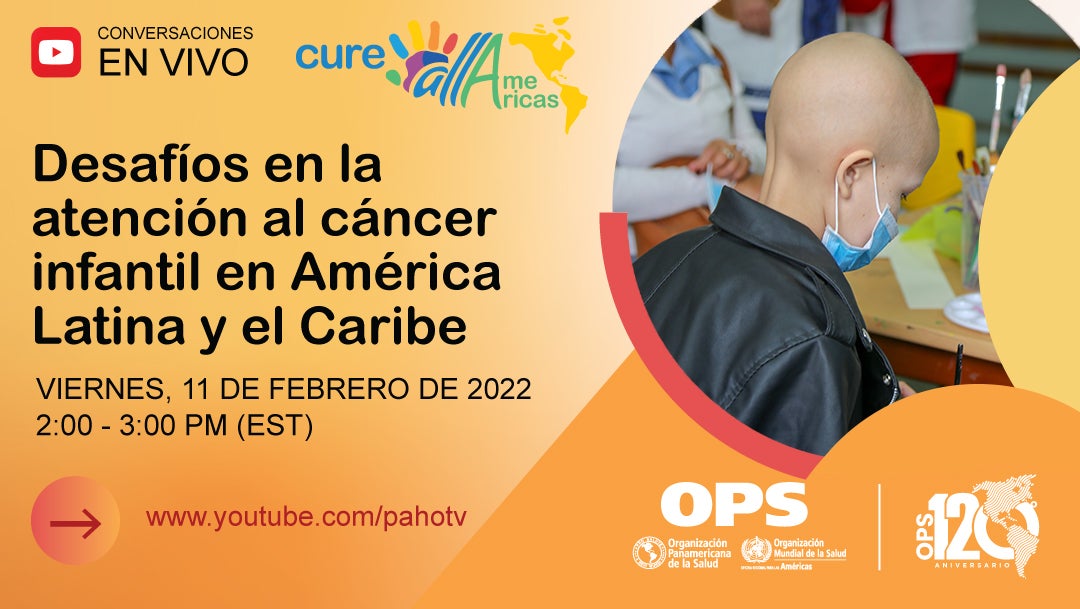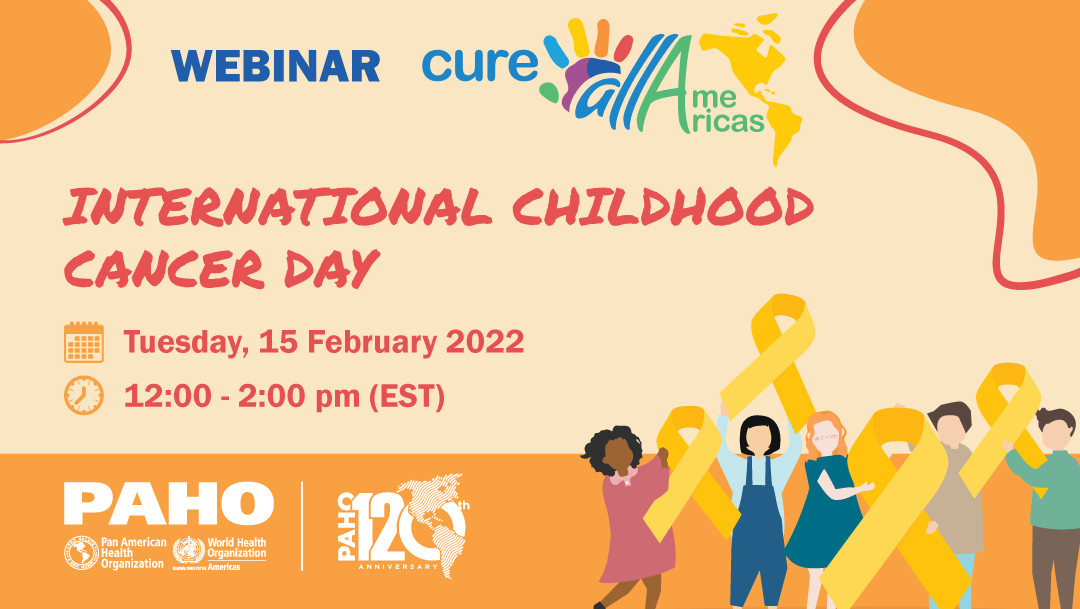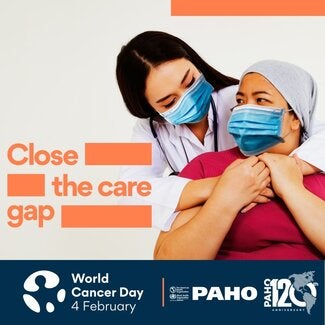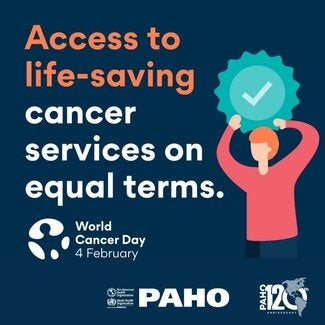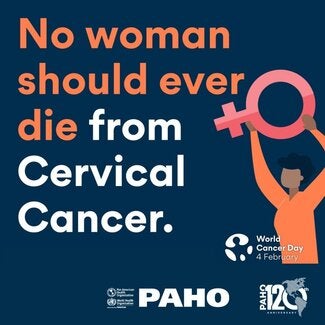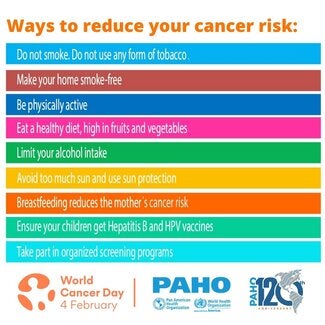In 2022, the global cancer community commemorates World Cancer Day, on February 4, with the slogan "Close the care gap". PAHO joins this campaign to call everyone, collectively and individually, to commit to strengthen actions aimed to improve access to quality care, including screening, early detection, treatment and palliative care.
Join us to reduce the impact of cancer!
Cancer in the Americas
Cancer is the second most frequent cause of morbidity and mortality in the Americas, after cardiovascular disease, and an important basis of health inequalities.
In the Americas there are an estimated 4 million people were newly diagnosed and 1.4 million people died from the disease in 2020. Approximately, 57% of new cancer cases and 47% of cancer deaths occurred in people 69 years of age and younger, in the prime of their lives.
Future trends
Globally, there were an estimated 20 million new cases of cancer and 10 million deaths from cancer. The cancer burden will increase by approximately 60% over the next two decades, further straining health systems, people and communities. The predicted global burden will increase to about 30 million new cancer cases by 2040, with the greatest increases occuring in low- and middle-income countries.
In the Americas region the, number of people expected to be diagnosed with cancer will increase by 57%, to approximately 6.23 million people are predicted to be diagnosed with cancer by 2040, if no further action is taken to prevent and control cancer.
Cancer can be prevented and controlled
Cancer can be prevented and controlled by implementing evidence-based strategies for cancer prevention, screening and early detection, treatment and palliative care. The most common modifiable risk factors for cancer, which are shared with many other noncommunicable diseases, are:
- Tobacco use
- Low fruit and vegetable intake
- Harmful use of alcohol
- Lack of physical activity
Some specific risk factors for cancer include chronic infections from human papilloma virus (HPV) -for cervical cancer-, hepatitis B and C - for liver cancer-, and H.pylori -for stomach cancer.
One third to one half of cancer cases could be prevented by reducing the prevalence of known risk factors. Examples of actionable interventions are tobacco control and HPV vaccination. The most effective primary prevention of cancer is based on whole-of-government approaches, with legislation, regulation and fiscal policies combined with activities to change community and individual behaviour. Public health messages and health promotion should present evidence on specific risk factors.
PAHO's work
Aiming to tackle the cancer burden at global level, the World Health Organization has launched three global campaigns:
Despite being a largely preventable and treatable disease, cervical cancer is an important public health problem, affecting mostly young and socioeconomically deprived women in developing countries. In the Americas region alone, age-standardized incidence in 2020 varied between 5 new cases per 100,000 women in Canada and 36 cases per 100,000 women in Bolivia. Similarly, mortality rates ranged from 2 deaths per 100,000 women in Canada and 19 deaths per 100,000 in Paraguay.
To tackle this important determinant of gender and socioeconomic inequalities, on November 17th 2020, the World Health Organization launched the Strategy to Accelerate the Elimination of Cervical Cancer as a public health problem, with the target of elimination set to a threshold of 4 or fewer new cases per 100 000 women by 2030. A multidisciplinary approach is needed to improve access and use of tools that are already known to be effective: HPV vaccination, cervical screening, and treatment.
The targets consist of:
- 90% of girls fully vaccinated with HPV vaccine by age 15 years;
- 70% of women are screened with a high-performance test (e.g., HPV test) by 35 years of age and again by 45 years of age; and
- 90% of women identified with the cervical disease receive treatment.
Given the great inequalities in childhood cancer survival between and within regions, ranging from 45% in Central America and the Caribbean to over 80% in North America, the Global Initiative for Childhood Cancer was launched in September 2018 aiming to increase 5-year survival from childhood cancer to at least 60% by 2030. The Initiative has two primary objectives:
- Increase the capacity of countries to provide quality information and services for children with cancer, and
- Increase prioritization of childhood cancer at the global and national levels.
An additional challenge for meeting the GICC goal for many countries is measuring patient outcomes and monitoring progress towards the targets set. In Latin America and the Caribbean, less than 20% of children aged 14 years and younger were covered by cancer registration by 2010, while more than 95% of children with cancer in North America were included in cancer registration. A key priority for PAHO/WHO is to provide the necessary technical support to Member States to strengthen both cancer services and information systems to monitor progress.
In March 2021, the World Health Organization introduced the Global Breast Cancer Initiative, aiming to reduce the burden of breast cancer, the most frequent cancer in women globally and in the Americas region. The initiative aims to reduce global breast cancer mortality by 2.5% per year, thus averting an estimated 2.5 million deaths by 2040. In 2020 there were nearly 500,000 new breast cancer cases and over 100,000 breast cancer deaths in the Americas. If successful, nearly 480,000 breast cancer deaths would be averted in the Americas region alone during the 20-year period. Activities for the initiative will focus on three pillars:
- Health promotion,
- Timely diagnosis, and
- Comprehensive treatment including supportive care
Resources
Essential Medicines for Noncommunicable Diseases Available through the PAHO Strategic Fund
Virtual Course on Fundamentals of Palliative Care
CERVICAL CANCER
Virtual Course on Comprehensive Cervical Cancer Control
Cervical Cancer in Women with HIV in Latin America and the Caribbean: Update and Steps Towards Elimination
CHILDHOOD CANCER
Virtual course on Early Diagnosis of Childhood and Adolescents Cancer
(In Spanish, soon available in English)
Infographic: Childhood and Adolescent Cancer Survivors
BREAST CANCER
Breast Cancer: Knowledge summaries for health professionals
WHO women’s health chatbot with messaging on breast cancer
Upcoming events
Conversaciones en vivo: Desafíos en la atención al cáncer infantil en América Latina y el Caribe (only in Spanish)

